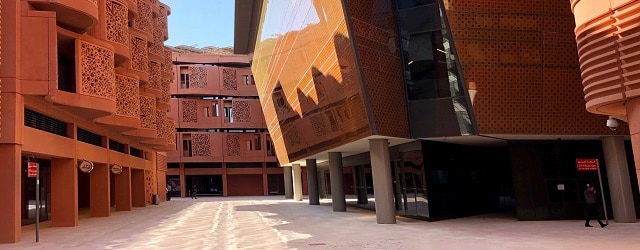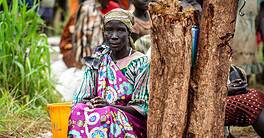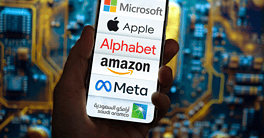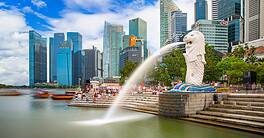Facing the combined effects of Covid-19 and an oil crisis, GCC governments and banks are looking to accelerate economic diversification and transition to sustainable finance.

Last June, First Abu Dhabi Bank, the biggest lender in the United Arab Emirates, issued the Gulf region’s first Hong Kong dollar–denominated green bond. Although modest in size, the HK$750 million, five-year bond suggests that banks in Gulf Cooperation Council states are feeling the need to curtail their dependence on the oil economy and explore new financing tools.
“Until recently, the focus across the GCC has been on economically crucial hydrocarbon industries that have been fueling GDP growth for nearly 100 years,” says Rula Al Qadi, head of Group Funding, Group Treasury, at FAB. “The advent of diversification has seen, and will see, an increased focus on sustainable and green finance.”
Sustainable finance is a fast-growing, $30 trillion global market. In 2019, assets invested in line with environmental, social and governance (ESG) principles grew by 17%. In the Middle East, however, it’s still nascent. While the overall green bond market was worth over $230 billion last year, it reached only $2 billion in the Middle East and North Africa (MENA) region.
The growth potential, however, is considerable, and local stakeholders are stepping up their game.
“The oil-rich countries of the GCC are starting to go green, creating the space for a viable market for green finance,” says Rola Abu Manneh, CEO of Standard Chartered UAE. “Like the rest of the world, the GCC is committed to diversifying its economy away from fossil fuels and aims to reduce its dependence on oil, which makes its economy vulnerable to falling energy prices. It also wants to respond to growing demands for action on climate change from policymakers and multilaterals.”
In the GCC, the UAE is the epicenter of the transition, with Dubai and Abu Dhabi competing to establish themselves as green hubs. The federation has rolled out several national plans, including UAE Green Agenda 2030 and Abu Dhabi Economic Vision 2030, in line with the United Nations’ Sustainable Development Goals. Over the next 30 years, the UAE aims to cut carbon dioxide emissions by 70% and switch to 50% clean energy.
Green Bonds and Solar Energy
FAB issued the region’s first green bond, a $587 million package, in 2017. Shortly after, the Emirati authorities adopted legislation to provide a clear framework for green federal sovereign bond and sukuk issuance. That same year, Abu Dhabi–based Masdar Clean Energy signed the region’s first green revolving credit facility, a $75 million line, with FAB, Societe Generale Corporate & Investment Banking, Sumitomo Mitsui Banking Corporation and Unicredit.
Since then, the green bond market, in which FAB is a regional pioneer, has achieved strong growth, “and that is expected to continue,” says Al Qadi.
In a region where it rains only about 20 days a year on average, sustainable investments have been mainly focused on solar power systems. An emblematic project is the $870 million Noor Abu Dhabi power plant. When it started operating in April 2019, it was the world’s largest single-site solar farm, covering an area of 7.8 km and with a capacity of 1,177 megawatts. The facility supplies clean electricity to over 200,000 homes.
Investment in sustainable-energy production is expected to trickle down to the real estate sector and boost energy-efficient building projects. “The real estate sector is very conscious now of energy-efficiency standards, implementing long-lasting energy-saving technologies and green building codes,” says Al Qadi.
Corporate Players and New Investors
Aside from satisfying government’s objectives, the Emirati private sector and large corporates are also playing a role in pushing the green finance agenda across industries and bringing new ESG investors to the table.
“Although falling renewable-energy technology costs have significantly lowered the up-front capital needed, financing renewable-energy projects remains difficult,” says Abu Manneh. “This is due to the high cost of capital, elevated by risks and underlying market barriers. Mobilizing private capital is central to rapidly scaling up investment in renewable energy.”
DP World, Dubai’s seaports operator, took out one of the region’s first corporate green loans in 2018. The interest rate on the $2 billion borrowing was linked to the company’s environmental impact through carbon emissions.
UAE-based shopping mall developer and operator Majid Al Futtaim is another pioneer in the sector. It claims to include sustainability goals in most of its operations and recently pledged that its carbon and water footprints will be trending downward by 2040. Last year, Majid Al Futtaim issued $600 million of 10-year green Islamic bonds.
“One of the opportunities when using green bonds is to be able to speak to some investors that would not have come for a normal transaction,” says Mohamed Damak, senior director at S&P Global Ratings Dubai. “In the case of Majid al Futtaim, it didn’t translate into a pricing advantage, but it did reportedly translate into a high diversification of the investor base.”
Opportunity in Sukuks
Green sukuks could be another means for GCC banks to leverage their unique position to build their presence in the global ESG and green investment industry.
“Green sukuk has the potential to further broaden the Islamic financial market and close the gap between the conventional and Islamic financial world,” says Standard Chartered’s Abu Manneh. “This could allow GCC issuers to access a wider pool of capital, which is necessary for the green sukuk market to develop.”
A look at Malaysia and Indonesia, which started issuing green sukuks to fund sustainable projects in 2017, suggests a path forward for GCC-based Islamic lenders, although the market in still in its infancy and the amounts at stake remain small. In only a year, Asian green sukuks grew to $2.1 billion in assets.
For Gulf-region banks, “green sukuk could attract conventional investors by providing a high degree of certainty about the allocation of the proceeds and by filling the fixed-income supply gap for green investors,” says Abu Manneh. “Shariah-compliant financing of environmental projects could also diversify the investor base in the green financial market.”
All such possibilities for growth need to be reevaluated in light of the Covid-19 crisis, however. According to S&P research, the global volume of sukuk issuance went down 38% in the first five months of 2020. By the end of the year, total issuance is expected to drop to $100 billion compared with $162 billion in 2019.
“As a result, the whole discussion about green sukuk has taken a back seat,” says Damak. “We don’t expect a lot of new issuances this year. What we could see, though, is social sukuk issuance; the idea here is to put the S back at the center of ESG investment.”
Indeed, the United Nations says shariah-compliant instruments could be key to building a strong response to the Covid-19–induced economic crisis. But as state revenues drop, public debt rises and pressure builds in both the public and private sectors to find quick ways to kick-start struggling economies, green finance may not be a priority.



